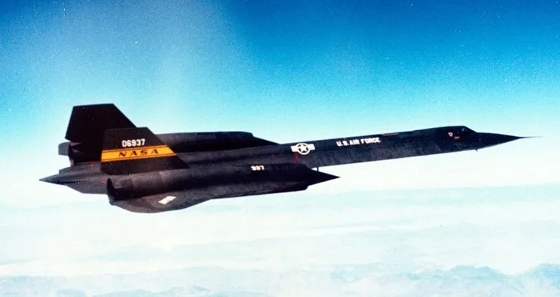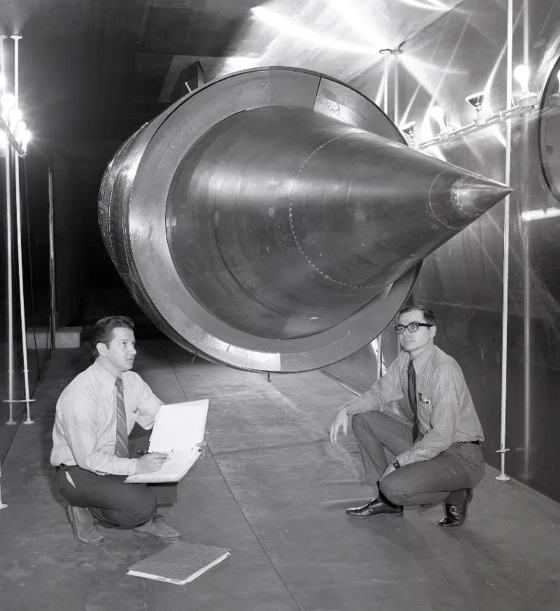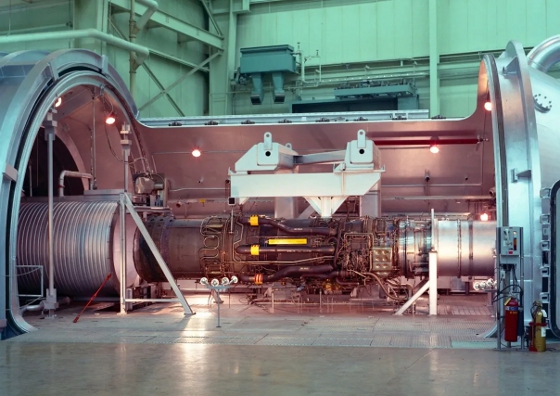 |
| April 16, 2024 | Volume 20 Issue 15 |
Designfax weekly eMagazine
Archives
Partners
Manufacturing Center
Product Spotlight
Modern Applications News
Metalworking Ideas For
Today's Job Shops
Tooling and Production
Strategies for large
metalworking plants
How Blackbirds helped NASA push supersonic flight tech

NASA pilots flew this YF-12C aircraft from 1971 and 1978 to perform airspeed calibrations and collect propulsion system data at numerous flight conditions. [Credit: NASA]
By Robert S. Arrighi
Supersonic flight became a reality in October 1947, when the Bell X-1 rocket plane broke the sound barrier. NASA's Lewis Research Center in Cleveland (now, NASA Glenn), which had served as the agency's aeropropulsion leader since it was established in the 1940s, subsequently helped NASA advance the technology needed to make longer supersonic flights possible.
A host of military aircraft capable of reaching supersonic speeds followed the Bell X-1. In the 1960s, Lockheed's family of Blackbirds (the original A-12, the YF-12 interceptor, and the SR-71 reconnaissance vehicle) became the world's first aircraft able to cruise at supersonic speeds for extended periods. However, the expansion of this capability to larger transport aircraft was difficult, in large part due to the lack of data collected about propulsion systems during longer supersonic flights.
To solve problems that weren't found during design-phase testing of these aircraft and to advance crucial technology, like the supersonic mixed-compression inlet, the military loaned two retired YF-12s to the Dryden Flight Research Center (today, NASA Armstrong) in 1969 as part of a collaborative NASA/Air Force effort. They planned to compare data from YF-12 flights to data collected in wind tunnels at NASA's Ames, Langley, and Lewis Research Centers.

Bobby Sanders (left) and Robert Coltrin check a full-scale YF-12 flight inlet prior to a February 1972 test run in the NASA Lewis Research Center (now NASA Glenn) 10×10 Supersonic Wind Tunnel. Although the 5-foot 9-inch diameter inlet was large for the test section, no problems arose. [Credit: NASA/Martin Brown]
Lewis' researchers had studied supersonic inlets in wind tunnels since the early 1950s and were in the midst of an extensive evaluation of supersonic nozzles and inlets using an F-106 Delta Dart. In this new effort, Lewis was responsible for testing a full-scale YF-12 inlet in the center's 10×10 Supersonic Wind Tunnel and analyzing a 32,500-pound thrust Pratt & Whitney J58 engine in the Propulsion Systems Laboratory (PSL).
Although mixed-compression inlets, which allowed the engines to operate as turbojets at subsonic speeds and as ramjets at higher Mach numbers, were highly efficient, their design left the engines vulnerable to flow disturbances that often caused "unstarts." Unstarts produced instantaneous drag that could stall the engine or cause the aircraft to quickly roll or yaw. Lewis researchers tested an actual inlet from a crashed SR-71, which they installed into the 10×10 in November 1971.
Over the next year, researchers collected aerodynamic data under different conditions in the wind tunnel. They also tested a new inlet control system patented by Lewis engineers Bobby Sanders and Glenn Mitchell that used mechanical valves to protect the aircraft against unstarts. It was the first time the system was tested on a full-scale piece of hardware.
Researchers also studied the relationships between the airframe, inlet, engine, and control system during normal flight conditions and when experiencing realistic flow disturbances.

A Pratt & Whitney J58 engine installed in the NASA Lewis Research Center (now, NASA Glenn) Propulsion Systems Laboratory No. 4 facility in November 1973. The center's technicians had to take great precautions to protect the instrumentation and control systems from the engine's 1,000-degree-Fahrenheit surface temperatures during the testing. [Credit: NASA/Martin Brown]
In the summer of 1973, a full-scale J-58 engine became the first hardware tested in Lewis' new PSL second altitude chamber. For the next year, researchers captured data under normal conditions and while using mesh inlet screens to simulate in-flight air-flow distortions.
The PSL tests also measured the engine's emissions as part of a larger effort to determine the high-altitude emissions levels of potential supersonic transports.
While the YF-12 program was terminated in 1979 as the agency's aeronautical priorities shifted, a year's worth of ground testing had already been completed in NASA's wind tunnels and the YF-12s had completed nearly 300 research flights. The program had expanded to include the development of high-temperature instrumentation, airframe pressure and flow mapping, thermal loads, and the inlet control system.
------------------------------------------
BONUS VIDEO: Pilot recounts tales of SR-71 Blackbird. The SR-71 reconnaissance aircraft flew missions around the globe from 1966 to 1998 at speeds above Mach 3 and altitudes of 85,000 ft or more. Although its many contributions to national security will never be fully revealed to the public, the Skunk Works marvel holds world aviation records for its speed and altitude. In this interview with former SR-71 pilot Col. Buzz Carpenter, you'll hear a first-hand account of the aircraft's power and majesty. An oldie but goodie. [Credit: Lockheed Martin]
------------------------------------------
NASA engineers demonstrated that small-scale models could be successfully used to design full-scale supersonic inlets, while the flight data was used to better understand the effect of subscale models and tunnel interference on data. Perhaps most importantly, the program at Lewis led to a digital control system that improved the response of the supersonic inlet to flow disturbances, which nearly eliminated engine restarts.
Many of the program's concepts were integrated into the SR-71's design in the early 1980s and have contributed to NASA's continuing efforts over the decades to achieve a supersonic transport aircraft.
NASA has an interesting fact sheet (PDF) on the Lockheed YF-12 Blackbird that you can access here. There is a similar fact sheet on the SR-71 Blackbird that you can access here.
About the author
Robert S. Arrighi is an archivist and historian at NASA's Glenn Research Center in Cleveland, OH.
Read more NASA aero tech stories at www.nasa.gov/aeronautics.
Published April 2024
Rate this article
View our terms of use and privacy policy
